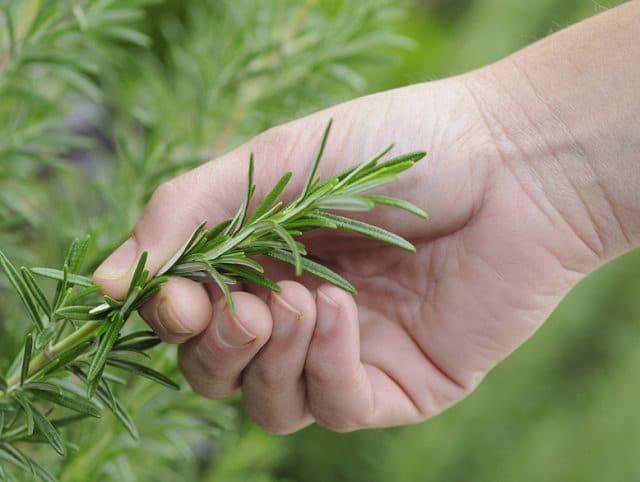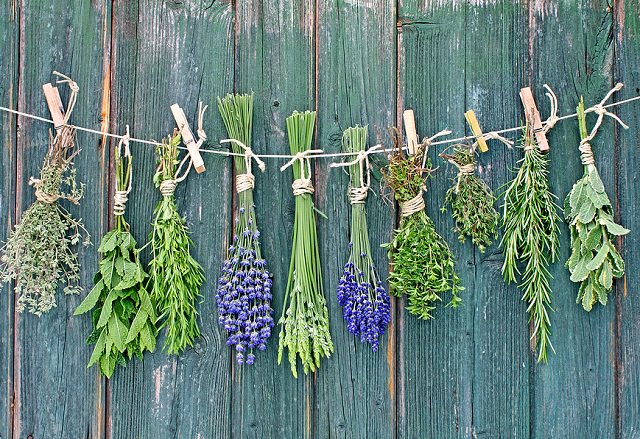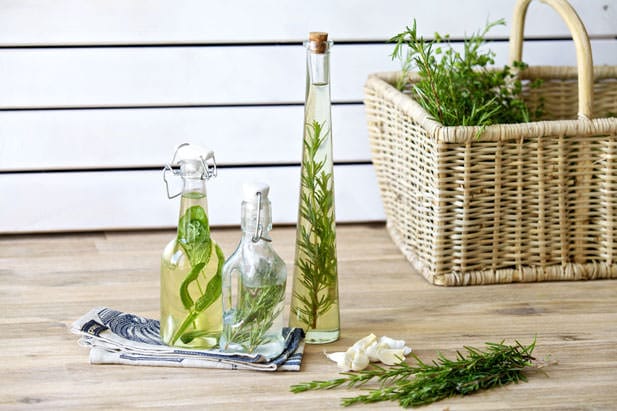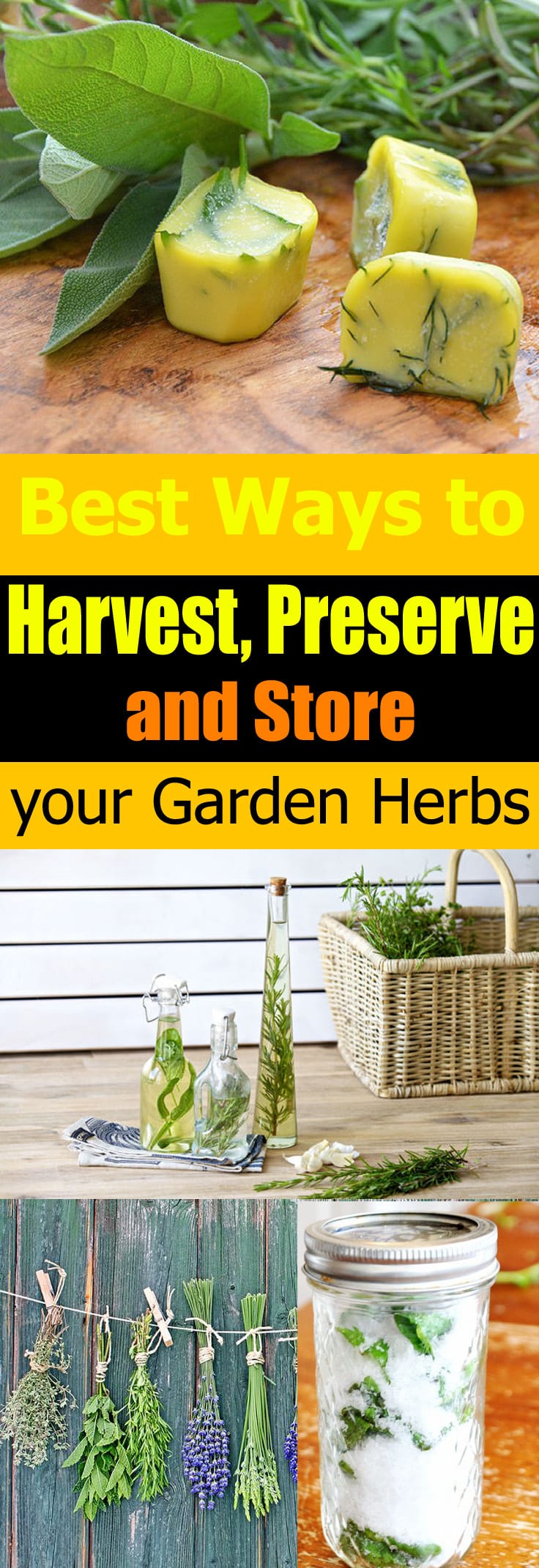Love growing herbs? But have you tried to preserve and store them? Here are the best ways to HARVEST, preserve, and store herbs. Must see!
Summer is a great time to replenish the stocks of herbs in our kitchen shelves and pantries. Thanks to the cheerful, warm, and sunny weather, many herbs achieve their strongest aroma and essential oils in their leaves in that season.
Therefore, it is important to learn how to harvest herbs at an appropriate time and how to dry and store them collectively to keep as much of their flavor.
How and When to Harvest Herbs
Leaves
Generally, most herbs have the best flavor and fragrance before flowering. So make sure to harvest them before the flowering. As a rule of thumb, never harvest more than one-third of the entire aerial growth at one time so that the plant can recover again. Although, exception are some fast growing herbs like chives and mint (or any other particular herb that grows best in your region) that can be harvested more aggressively. The leaves are collected according to the characteristics of the plant, for example– Harvest the top set of basil leaves to keep it bushy, while for parsley the outer leaves should be harvested first.
The best time of day to harvest herbs is the late morning or early afternoon after the dew has dried off (which can promote fungus after harvesting), but it must be done before the intense midday sun.
Seeds
To harvest herbs grown for their seeds, say– dill, fennel, cumin, coriander, and caraway; wait for a dry day and when the seedpods are dry and brittle. Shake the ripened seed pod into a paper bag, label it and store it in a dry place.
Flowers
Harvest herb flowers just as they start to open. The flowers, like those of nasturtium, borage, chives, cilantro or fennel are mainly used as a flavoring when fresh. Lavender, chamomile, and bergamot etc. can be harvested the same way you read about harvesting the leaves. Learn how to store and harvest chamomile here.
Preserving Herbs
Before proceeding with any of the following methods given below, you must take into account some basic steps before herbs are preserved properly. First, make sure that the leaves (or any other part) are pest and disease free. Also, it is important to give a quick wash: it is necessary to remove dust and maintain the essential oils. After this, shake the herbs first to remove excess water and clean them gently with a soft, clean cloth or paper towel. If, in case you’re drying roots too, wash them thoroughly, use a vegetable brush to scrub them.
1. Drying Herbs
One of the most commonly used methods to preserve herbs is drying them. The most important rule is to dry herbs in the shortest possible time, this is to keep the maximum content of essential oils and active substances inside them.
Also, tender leaf herbs such as basil, lemon balm, mint, oregano, and tarragon will mold due to their high moisture content if not dried quickly. For this, spread the herbs in a thin layer on a double layer of paper towel or newspaper and leave them until they dry out completely (during this time rotate them regularly). The place should be shady, cool, dry, well-ventilated and airy.
Note: Herbs can be dried outside in the sun but for the better flavor and color and to save the essential oils it is better to dry them indoors.
If you have a dry and shady attic that is clean, you should hang in there cut stalks of herbs tied in loose bunches. The stalks in these conditions will slowly dry out without losing the valuable components.
Drying Herbs in a Microwave
Another solution for drying of leaves and roots is to use the microwave oven. Its use will significantly reduce the time required for drying.
- Place a really thin layer of herb branches on a paper towel over a microwave safe plate or tray.
- Now, lay another paper towel on top of herbs.
- Set the microwave on high for a couple of minutes, keep checking every 30 seconds to stop if the herbs start to burn.
- Do this until the herbs dry out completely.
Drying Seeds
The seeds should be dried in brown paper bags at room temperature for 2 to 3 weeks, well protected from the moisture.
Drying Roots
Unearth the plant carefully and thoroughly wash the root to remove all dirt. (Use brush if necessary). Cut the roots into pieces and place them on a rack to dry them either in the sun or indoors in some warm dry place until crisp. You can also tie roots in bunches and hang to let them dry.
2. Freezing Herbs
A completely different method of fixation is the use of very low temperatures. The herbs remain frozen are comparably much fresh than subjected to drying and at the same time they are convenient to use too.
Excellent way to store herbs is to freeze chopped herbs in the ice cubes. Read this excellent article on Gardener’s world.
Freezing Herbs in Oil
Preserving herbs in olive oil is one of the best kitchen tricks— it takes almost no effort but still infuses a lot of flavor into a dish. It makes the perfect addition to winter and fall stews, roasts, soups, and it’s the perfect way to top mashed potatoes. You can use these little cubes of deliciousness in just about anything, and you’ll be so pumped that you took 10 minutes to whip them up while herbs were in abundance. Read more of this on The Pioneer Woman.
Please remember, if you freeze a number of different herbs, it is worth to mark trays or containers in which you’re keeping them.
3. Preserving Herbs in Vinegar
Preserving herbs in vinegar is one of the best ways to store and preserve herbs. Herbal vinegar makes great additions to salad dressings, fresh or sautéed vegetables, and make great gifts as well. All you will need are fresh herbs, vinegar, and canning jars. Use about 4 cups of fresh herbs to a gallon of vinegar, more if you want a stronger flavor. Check out this post to learn how to do it.
4. Preserving Herbs with Salt or Sugar
Preserving herbs with salt or sugar is an old and traditional but less popular method these days. You can also use flavored sugar or salt to preserve your garden herbs. Check out the tutorial here.










Snip individual leaves or cut an entire shoot just above a leaf node (this will encourage dormant buds to grow at the nodes for a bushier plant). Harvest the seeds of dill, fennel, and coriander when the flower heads have faded and started to dry. Clip the flower heads and place them in paper bags, then shake the heads to dislodge the seeds. Store seeds in an airtight container.